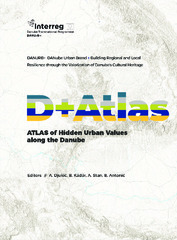Приказ основних података о документу
New Border Cities in Interbellum Stagnation
| dc.creator | Antonić, Branislav | |
| dc.creator | Vitkova, Lubica | |
| dc.creator | Balizs, Daniel | |
| dc.creator | Vaništa Lazarević, Eva | |
| dc.creator | Marić, Jelena | |
| dc.creator | Harmanescu, Mihaela | |
| dc.creator | Manea, Sorin | |
| dc.creator | Georgiev, Georgi | |
| dc.creator | Gaydarova, Eleonora | |
| dc.date.accessioned | 2024-03-05T11:32:24Z | |
| dc.date.available | 2024-03-05T11:32:24Z | |
| dc.date.issued | 2022 | |
| dc.identifier.isbn | 978-86-7924-320-1 | |
| dc.identifier.uri | https://raf.arh.bg.ac.rs/handle/123456789/2016 | |
| dc.description.abstract | The end of the World War I in 1918 changed dramatically the political picture of the eastern half of Europe, mainly divided between three large realms: Austro-Hungarian, German and Russian empires. Their dissolution made space for new national states, which were much smaller, causing a lot of new borderlands. Moreover, these new borders disrupt well established economic markets, zones, and corridors. As a consequence, many urban settlements in the region became border cities and towns or were deeply affected by new borders; they eventually entered the interwar period (1918-1939) with challenging economic prospects, which influenced their demographic stagnation or shrinkage. This unfavoured borderland situation had profound effects on urban life and economy along the Danube in interbellum years. New urban development was an exception, limited to just several cities with special advantages, such as Bratislava (new ethnic capital) or Novi Sad (new regional seat). The most affected cities were those ones divided by the newly established borders the Danube – unwanted twin cities. For instance, Esztergom and Štúrovo/Párkány. Similarly, towns on the preserved borders, for example, in the Iron Gates Region, continued their stagnation. Finally, some bigger cities along the Danube lost their gravitation zones (Mosonmagyaróvár) or the status of a country seat (Sombor), which produced similar disadvantages as being directly on border. | sr |
| dc.language.iso | en | sr |
| dc.publisher | Beograd : Univerzitet u Beogradu - Arhitektonski fakultet | sr |
| dc.relation | DANUrB+ | sr |
| dc.rights | openAccess | sr |
| dc.source | Atlas of Hidden Urban Values along the Danube [Картографска грађа] | sr |
| dc.subject | Urban development | sr |
| dc.subject | Interwar period | sr |
| dc.subject | Borderland | sr |
| dc.subject | Danube | sr |
| dc.subject | Shrinking cities | sr |
| dc.title | New Border Cities in Interbellum Stagnation | sr |
| dc.type | other | sr |
| dc.rights.license | ARR | sr |
| dcterms.abstract | Гаyдарова, Елеонора; Ваништа Лазаревић, Ева; Харманесцу, Михаела; Марић, Јелена; Бализс, Даниел; Виткова, Лубица; Aнтонић, Бранислав; Манеа, Сорин; Георгиев, Георги; | |
| dc.rights.holder | Универзитет у Београду - Архитектонски факултет | sr |
| dc.citation.spage | 58 | |
| dc.citation.epage | 69 | |
| dc.identifier.fulltext | http://raf.arh.bg.ac.rs/bitstream/id/6506/D+Atlas_26.pdf | |
| dc.identifier.rcub | https://hdl.handle.net/21.15107/rcub_raf_2016 | |
| dc.type.version | publishedVersion | sr |

